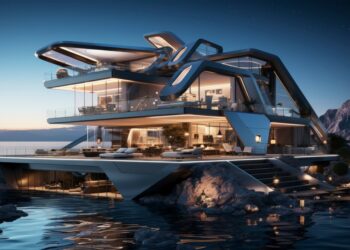The world is becoming more digital by the day. Although this may seem like a good thing, it does have its downsides. One of these is that many games are starting to look and feel the same. Many virtual environments now only feature generic ships, buildings, and decorations. A great example of this is video games. It’s not uncommon for games at this point to have if not hundreds then thousands of different custom characters with unique appearances and clothes.
In other words, virtual spaces are getting more and more homogenous because there are so many different people sharing the same designs and building their games as they go along. This can make it hard for individual game developers to stand out or create something truly new.
Fortunately, there are ways virtual space designers can start implementing custom content into their creations to make them more immersive or even just make them look better in specific situations. If you want to learn how to do that in OC Shipyard then keep reading!
Show and Tell
In virtual reality, custom content is just as important as the core experience of the VR headset itself. For example, what you show your users in VR is just as important as what you put into the headset. When designing a virtual space, it’s important to think about what you want to show in your game and how you want to present that content. In VR, you can’t just show someone a selection of three-dimensional objects in a two-dimensional space.
Instead, you need to think about how you want to make your game look and feel. What kind of content should it have? This is where custom content can become essential. If you want to make a space that looks like a specific place in the real world, then you can just make some houses in your game that look exactly like the ones in that real place.
If you want to add a cool mechanic, like a power generator powered by waterfalls, then you can do that too. The best custom content is the kind that makes a game look and feels better. That way, when a user puts on their VR headset, they feel transported to whichever setting you’ve created. You can also use custom content to make a game less generic, like putting in a few buildings designed like the local museum. This can help people find their way around the space without needing to know what everything is called from the outset.
Create a Custom Environment
Like the real world, virtual worlds can have many diverse places that are all unique in their ways. It’s important to help users find their way around a virtual space by creating a custom environment. Do this by creating a virtual world with custom assets. These should include buildings, decorations, and assets that make the virtual world look and feel like the real world.
As you go through the design process, keep in mind that people want to be able to navigate your virtual space, so make the environment easily navigable. You can do this by making it contain simple navigation paths like roads and paths that lead to specific destinations.
You should also make the environment customizable. This means you should let people change how it looks and feels by including decoration assets that can be repurposed by users. At the end of the design process, let people play with the environment and then let them share their creations with others, making your custom environment.
Be Aware of Your Environments
While custom environments can make a virtual space feel more realistic, it’s important to keep in mind that not everyone’s going to be in your virtual environment. This means you have to be aware of the other types of virtual spaces in your game. One way to do this is to design each type of virtual space separately. This can help you be aware of them better by making you think about how they could affect your virtual space.
For example, if you design a virtual park and it’s filled with people playing your game, then they’re going to bump into your custom environment and ruin it. To avoid this, let people play in different virtual spaces before they move onto your custom environment.
This can help you keep your virtual spaces in mind and make sure they don’t affect your custom environment too much. It can also help you make your virtual spaces feel less generic so they don’t look and feel like the real world. People are going to want to experience your virtual spaces, so it’s important to make these environments feel different from each other.
Limit the In-Game Tools
Sailing games have many different custom content options, from the ability to change the colour of a sail to create a custom flag. However, most of these options can become problematic if not used correctly. For example, altering the colour of a sail can make a ship look like it’s going fast even though it’s not. This is because the altered colour is too intense for the actual colour of the ship.
To avoid creating these kinds of problems, let people use custom content options with caution. This can help you keep in mind how much custom content options affect your virtual space. To make sure you don’t go overboard, let people experiment with custom content options a little before they’re fully released in-game.
This can help you learn how they affect your virtual space and help people find the best uses for these features. It can also help you avoid releasing custom content options that are too powerful and ruin the virtual spaces for other players.
Build Levels with Blockout and Scaffolding
Virtual spaces don’t have to look the same from one level to the next. You can build different virtual spaces on the same virtual level and let people choose which one they want to play in. This can be done by creating multiple blackouts. A blackout is a level set in a virtual space that doesn’t have a UI or camera path. When people choose to play in a blackout, they enter a virtual space that has a different UI and camera path.
This way, you can create a variety of virtual spaces on the same level and let people choose which one they want to play in. When adding lockouts, make sure they’re clearly labelled as a choice for which virtual space they’re from. You can do this by adding labels or using a blackout that’s clearly labelled as which virtual space it’s from.
Conclusion
Custom content is an important part of designing immersive virtual spaces. Without it, virtual worlds can feel too generic and homogenous. Custom content can help you make virtual spaces that feel more realistic and less generic. Now, you have all the information you need to make your custom content special.
These tips and tricks will help you incorporate custom environments into your virtual spaces and make them stand out. Custom content is an important part of virtual space design, so don’t hesitate to check them all out!













